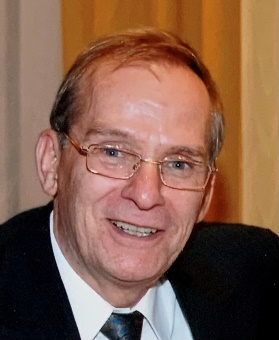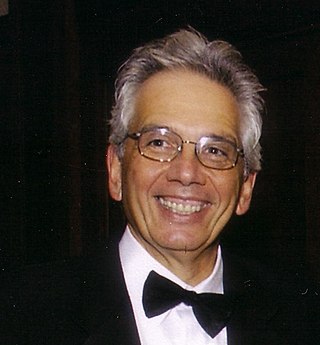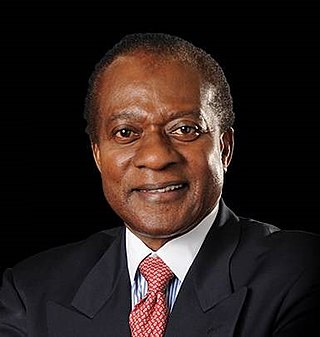Related Research Articles
A personal communications service (PCS) is set of communications capabilities that provide a combination of terminal mobility, personal mobility, and service profile management. This class of services comprises several types of wireless voice or wireless data communications systems, typically incorporating digital technology, providing services similar to advanced cellular mobile or paging services. In addition, PCS can also be used to provide other wireless communications services, including services that allow people to place and receive communications while away from their home or office, as well as wireless communications to homes, office buildings and other fixed locations. Described in more commercial terms, PCS is a generation of wireless cellular-phone technology, that combines a range of features and services surpassing those available in analogue- and first-generation (2G) digital-cellular phone systems, providing a user with an all-in-one wireless phone, paging, messaging, and data service.

A telephone is a telecommunications device that permits two or more users to conduct a conversation when they are too far apart to be easily heard directly. A telephone converts sound, typically and most efficiently the human voice, into electronic signals that are transmitted via cables and other communication channels to another telephone which reproduces the sound to the receiving user. The term is derived from Greek: τῆλε and φωνή, together meaning distant voice. A common short form of the term is phone, which came into use early in the telephone's history. Nowadays, phones are almost always in the form of smartphones or mobile phones, due to technological convergence.

Wireless communication is the transfer of information (telecommunication) between two or more points without the use of an electrical conductor, optical fiber or other continuous guided medium for the transfer. The most common wireless technologies use radio waves. With radio waves, intended distances can be short, such as a few meters for Bluetooth or as far as millions of kilometers for deep-space radio communications. It encompasses various types of fixed, mobile, and portable applications, including two-way radios, cellular telephones, personal digital assistants (PDAs), and wireless networking. Other examples of applications of radio wireless technology include GPS units, garage door openers, wireless computer mouse, keyboards and headsets, headphones, radio receivers, satellite television, broadcast television and cordless telephones. Somewhat less common methods of achieving wireless communications involve other electromagnetic phenomena, such as light and magnetic or electric fields, or the use of sound.

Internet access is a facility or service that provides connectivity for a computer, a computer network, or other network device to the Internet, and for individuals or organizations to access or use applications such as email and the World Wide Web. Internet access is offered for sale by an international hierarchy of Internet service providers (ISPs) using various networking technologies. At the retail level, many organizations, including municipal entities, also provide cost-free access to the general public.
The public switched telephone network (PSTN) is the aggregate of the world's telephone networks that are operated by national, regional, or local telephony operators. It provides infrastructure and services for public telephony. The PSTN consists of telephone lines, fiber-optic cables, microwave transmission links, cellular networks, communications satellites, and undersea telephone cables interconnected by switching centers, such as central offices, network tandems, and international gateways, which allow telephone users to communicate with each other.

A cellular network or mobile network is a telecommunications network where the link to and from end nodes is wireless and the network is distributed over land areas called cells, each served by at least one fixed-location transceiver. These base stations provide the cell with the network coverage which can be used for transmission of voice, data, and other types of content. A cell typically uses a different set of frequencies from neighboring cells, to avoid interference and provide guaranteed service quality within each cell.

The history of mobile phones covers mobile communication devices that connect wirelessly to the public switched telephone network.

The history of telecommunication began with the use of smoke signals and drums in Africa, Asia, and the Americas. In the 1790s, the first fixed semaphore systems emerged in Europe. However, it was not until the 1830s that electrical telecommunication systems started to appear. This article details the history of telecommunication and the individuals who helped make telecommunication systems what they are today. The history of telecommunication is an important part of the larger history of communication.

Martin Cooper is an American engineer. He is a pioneer in the wireless communications industry, especially in radio spectrum management, with eleven patents in the field.

Ian F. Akyildiz is a Turkish-American electrical engineer. He received his BS, MS, and PhD degrees in Electrical and Computer Engineering from the University of Erlangen-Nürnberg, Germany, in 1978, 1981 and 1984, respectively. Currently, he is the President and CTO of the Truva Inc. since March 1989. He retired from the School of Electrical and Computer Engineering (ECE) at Georgia Tech in 2021 after almost 35 years service as Ken Byers Chair Professor in Telecommunications and Chair of the Telecom group.
Amos Edward Joel Jr. was an American electrical engineer, known for several contributions and over seventy patents related to telecommunications switching systems.
The IEEE Eric E. Sumner Award is a Technical Field Award of the IEEE. It was established by the IEEE board of directors in 1995. It may be presented annually, to an individual or a team of not more than three people, for outstanding contributions to communications technology. It is named in honor of Eric E. Sumner, 1991 IEEE President.
The first smart antennas were developed for military communications and intelligence gathering. The growth of cellular telephone in the 1980s attracted interest in commercial applications. The upgrade to digital radio technology in the mobile phone, indoor wireless network, and satellite broadcasting industries created new opportunities for smart antennas in the 1990s, culminating in the development of the MIMO technology used in 4G wireless networks.
Dr. Hui Liu is a Chinese American professor and an entrepreneur in the field of wireless and satellite communications. He is a prolific researcher with more than 200 scholarly articles and 2 textbooks, and a creative innovator with 67 awarded patents in areas ranging from wireless systems, signal processing, satellite networks, to machine learning. He has more than 12,000 paper citations and an H-index of 56 as of 2018. Dr. Liu is also one of the principal designers of three industrial standards on cellular networks, terrestrial broadcasting, and satellite communications, respectively.

Bernhard H. Walke is a pioneer of mobile Internet access and professor emeritus at RWTH Aachen University in Germany. He is a driver of wireless and mobile 2G to 5G cellular radio networks technologies. In 1985, he proposed a local cellular radio network comprising technologies in use today in 2G, 4G and discussed for 5G systems. For example, self-organization of a radio mesh network, integration of circuit- and packet switching, de-centralized radio resource control, TDMA/spread spectrum data transmission, antenna beam steering, spatial beam multiplexing, interference coordination, S-Aloha based multiple access and demand assigned traffic channels, mobile broadband transmission using mm-waves, and multi-hop communication.

Victor Bahl is an Indian Technical Fellow and CTO of Azure for Operators at Microsoft. He started networking research at Microsoft. He is known for his research contributions to white space radio data networks, radio signal-strength based indoor positioning systems, multi-radio wireless systems, wireless network virtualization, edge computing, and for bringing wireless links into the datacenter. He is also known for his leadership of the mobile computing community as the co-founder of the ACM Special Interest Group on Mobility of Systems, Users, Data, and Computing (SIGMOBILE). He is the founder of international conference on Mobile Systems, Applications, and Services Conference (MobiSys), and the founder of ACM Mobile Computing and Communications Review, a quarterly scientific journal that publishes peer-reviewed technical papers, opinion columns, and news stories related to wireless communications and mobility. Bahl has received important awards; delivered dozens of keynotes and plenary talks at conferences and workshops; delivered over six dozen distinguished seminars at universities; written over hundred papers with more than 65,000 citations and awarded over 100 US and international patents. He is a Fellow of the Association for Computing Machinery, IEEE, and American Association for the Advancement of Science.

Robert W. Heath Jr. is an American electrical engineer, researcher, educator, wireless technology expert, and a Professor in the Department of Electrical and Computer Engineering at the University of California, San Diego. He is also the president and CEO of MIMO Wireless Inc. He was the founding director of the Situation Aware Vehicular Engineering Systems initiative.

Richard D. Gitlin is an electrical engineer, inventor, research executive, and academic whose principal places of employment were Bell Labs and the University of South Florida (USF). He is known for his work on digital subscriber line (DSL), multi-code CDMA, and smart MIMO antenna technology all while at Bell Labs.

Victor B. Lawrence is a Ghanaian-American engineer credited with seminal contributions in digital signal processing for multimedia communications. During his 30-plus-year tenure at Bell Laboratories, Dr. Lawrence made extensive and fundamental personal contributions to voice, data, audio and video communications. He led numerous projects that significantly improved or enhanced every phase in the evolution of early low-speed and today's high-speed data communications. He is a Research Professor and Director of the Center for Intelligent Networked Systems (iNetS) at Stevens Institute of Technology, where he also served as Associate Dean. He was inducted into the National Inventors Hall of Fame in 2016. He is a Member of the National Academy of Engineering, a Fellow of the IEEE for contributions to the understanding of quantization effects in digital signal processors and the applications of digital signal processing to data communications, a Fellow of AT&T Bell Labs, and a Charter Fellow of the National Academy of Inventors.
Anthony Acampora is a professor emeritus of Electrical and Computer Engineering as well as the founder of the Center for Wireless Communications at the University of California, San Diego.
References
- ↑ Abigayle Onessa France (2013-08-29). "fisk.edu". fisk.edu. Retrieved 2013-10-02.
- ↑ "tnstate.edu". tnstate.edu. 2013-09-01. Retrieved 2013-10-02.
- ↑ Archived July 12, 2009, at the Wayback Machine
- ↑ Archived October 20, 2006, at the Wayback Machine
- ↑ "engineering.stanford.edu". engineering.stanford.edu. 2013-09-25. Archived from the original on 2010-08-12. Retrieved 2013-10-02.
- ↑ USpatent 7437158
- ↑ USpatent 7120139
- ↑ USpatent 5724665
- ↑ USpatent 5655003
- ↑ USpatent 5608780,"Wireless communication system having base units which extracts channel and setup information from nearby base units",issued 1997
- ↑ USpatent 5257397,Barzegar, Eryaman, Russell, and Schroeder,"Mobile data telephone",issued 1993
- ↑ USpatent 5084869,Jesse E. Russell,"Base station for mobile radio telecommunications systems",issued 1992 (cited 60 times, per google patents)
- ↑ Mr. Jesse E. Russell at National Academy of Engineering web site
- ↑ "개인통신에 대한 관심이 고조되면서 세계 각국에서는 개인통신서비스 공을 위해 서비 스 개념" (PDF). ettrends.etri.re.kr. Archived from the original (PDF) on 2012-12-09. Retrieved 2013-10-02.
- ↑ First Name Middle Name Last Name (1990). "AT&T next generation digital cellular base station technology". International Symposium on Switching. Vol. 6. pp. 195–198. doi:10.1109/ISS.1990.768729. S2CID 111367843.
- ↑ Chien, E. S. K.; Marinho, J. A.; Russell, J. E. (1988). "Design mobile satellite system architecture as an integral part of the cellular". Mobile Satellite Conference: 387. Bibcode:1988mosa.conf..387C.
- ↑ First Name Middle Name Last Name (1987). "Cellular access digital network (CADN): Wireless access to networks of the future". IEEE Communications Magazine. 25 (6): 22–27. doi:10.1109/MCOM.1987.1093628. S2CID 5722207.
- ↑ First Name Middle Name Last Name (1988). "US cellular network in the 90s". 8th European Conference on Electrotechnics, Conference Proceedings on Area Communication. p. 9. doi:10.1109/EURCON.1988.11091. S2CID 61168423.
- ↑ Russell, J. E. (1994-07-01). "Universal personal communications: Emergence of a paradigm shift in the communications industry". International Journal of Wireless Information Networks. 1 (3): 149–163. doi:10.1007/BF02107415. S2CID 22255088.
Sources
- Van Sertima, Ivan (1982). Blacks in Science . Transaction Publishers. ISBN 0-87855-941-8.
- Bradsher, Keith (May 16, 1990). "The Race to Develop the Pocket Telephone". The New York Times .
- Garnett, David (2011). Jesse Russell. iAM Solutions, Inc. Archived from the original on 2011-11-18. Retrieved 2012-11-09.